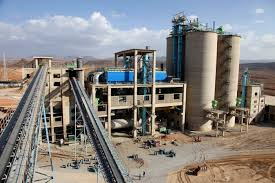
By Gaelle Conille

For the past 16 years, Ethiopian photographer Michael Tsegaye has been chronicling the transformation of his native Ethiopia. In documenting the vast changes brought about by development, namely old communities being replaced by new construction, Tsegaye is producing a modern portrait of his country, which he hopes will defy stereotypes about the African continent. His black-and-white photos are both breathtaking and extremely telling of the ongoing progress that is taking Ethiopia by storm.
With its immense geographic diversity, its continuous mountain ranges and jungles, numerous rivers, fertile West, and expanding cities, one can only imagine how frustrating it must be for Ethiopians, such as Michael Tsegaye, that views of their country continue to be shaped by the terrible famines of the 1980s. Yet, the immense change that has been occurring for the past ten years does much to combat previous conceptions of poverty and lack of progress.
Ethiopia’s economy has been growing by 11 percent on average in the past decade making it one of the world’s fastest growing economies. – Agriculture continues to be the backbone of the Ethiopian economy (42.9 percent of GDP). Ethiopia’s sustained economic success, the size of its growing market, and its production potential have combined to render it increasingly more attractive as a place to do business and new industries have emerged that did not exist until a few years ago. One small-scale example is the fact that shopkeepers in Addis Ababa’s outskirts have benefited from microfinance initiatives. The favorable economic environment that has cultivated this growth is largely a product of the government’s commitment to pursuing prudent fiscal policies. The government’s main goal is to transform Ethiopia into a middle-income country by 2025 through its new Growth and Transformation Plan. The plan envisions development through change in the business sector, agriculture, infrastructure, health and education.
Many countries in Africa, such as Angola and includes Congo, Ethiopia, Lesotho, Malawi, Nigeria, Rwanda and Tanzania have enjoyed rapid growth in GDP per person. But they have also done well at translating that strong growth into improved well-being.
A report published by UNDP estimates that headcount poverty in Ethiopia has declined to 26% (2012/13), from 45.5%, in 1996. Ethiopia is one of the top movers of human development in recent years. In the last 30 years life expectancy here has increased by 50%. Ethiopia is on track to achieving six out of eight of the United Nations’ Millennium Development Goals.

Ethiopia’s progress in poverty reduction and human development is, in large part, the result of the economic and political stability of the last decade. A notable indicator of improved well-being is the fact that many countries in Africa have seen a significant drop in the rate of H.I.V infections. Ethiopia’s progress has been particularly impressive, with the rate of new infections dropping by 90 percent between 2001 and 2011(source). Improvement in AIDS care is part of a general improvement in healthcare, especially in maternal-child care and Ethiopia has increased its health budget and built new clinics and hospitals. An initiative that sets Ethiopia apart from other countries and has contributed greatly to the decreasing rates of H.I.V infections is the community conversation used on a national level. Bogaletch Gebre started these community conversations as an effort to combat female genital cutting. Community conversations are guided groups of 50 people who meet over and over again to talk through issues and gradually reach a consensus. Their use has been extended to villages and schools around the country to fight H.I.V, and in 2012, the Joint United Nations Program on H.I.V and AIDS noted in its report on Ethiopia that the vast majority of local government had successfully conducted community conversations. The programs are particularly beneficial for the population because ideas about health are developed within the community rather than being imposed by outsiders.
In addition to promoting development through positive changes in business, infrastructure, agriculture, and health and education, the Growth and Transformation plan also proposes development through changes in the practices of mass media and journalism, something that is not normally at the forefront of development initiatives. Certain changes are already occurring at the Ethiopian News Agency, but it is yet unclear whether this will increase freedom of the press in a country where the state owned news agencies have never been free of censorship. Even the independent newspapers have failed to escape the lashes of government censorship. Any form of criticism directed towards the government, and even the new Growth and Transformation Plan for example, is taboo.
As should be expected, Ethiopia must deal with the challenges that often result from economic growth. The country is still faced with the challenges of ensuring quality of social services like education and health, as well as addressing the growing income inequality and guaranteeing the inclusivity of economic growth. Another area that would benefit from improvement is Ethiopia’s private sector, whose full potential has yet to be unleashed. The United Nations Development Program has taken the lead to support the government to set up a national Entrepreneurship Development Programme and an Entrepreneurship Development Centre to manage the program. These entrepreneurship programs along with the country’s economic growth, infrastructure initiatives and its breakthroughs in human development establish Ethiopia as a positive example of development in Africa that the rest of the world can learn from and that should change negative preconceptions the African continent as a whole.
Gaelle Conille ’18 is in Jonathan Edwards College. Contact her at gaelle.conille@yale.edu